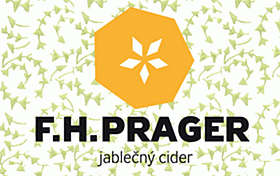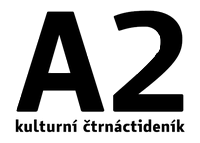UK, 2010, 57 min
Johannes Sjoberg
27.01.2013 11:45
The film focuses on identity and discrimination in everyday lives of transgendered Brazilians living in Sao Paulo. Fabia Mirassos projects her life through the role of Meg, a transsexual hairdresser confronting intolerance and re-living memories of abuse. Savana 'Bibi' Meirelles plays Zilda who makes her living as one of the many transgendered sex workers in Sao Paulo, as she struggles to find her way out of prostitution.
England, 2012, 24 min
Chloe Symonds
25.01.2013 22:40
 What´sa nice Girl Like YOu doing in place like this? At a time when strippers are alternately viewed as victims of a patriarchal society or as ampowered feminist icons, this film follows two exotic dancers as they reflect upon their experiences of the industry, and contemplate how their job has affected their identities, touchign upon issues of gender, they body, and self hood.
What´sa nice Girl Like YOu doing in place like this? At a time when strippers are alternately viewed as victims of a patriarchal society or as ampowered feminist icons, this film follows two exotic dancers as they reflect upon their experiences of the industry, and contemplate how their job has affected their identities, touchign upon issues of gender, they body, and self hood.
Chloe Symonds having studied Social Anthropology as an undergraduate. She received the Arts and Humanities Research Council Scholarship to undertake a Master´s degree studying Visual Anthropology at Manchester University´s Granada centre.
Director: Chloe Symons
Production: Granada Centre for Visual Anthropology
Language of dialogues: English
Language of subtitles:-
Kanada / Kamerun, 2011, 87 min
Matthew Lancit
26.01.2013 21:10
 Director Matthew Lancit quit his day job to travel across Cameroon, visiting some of the world’s most joyous funeral celebrations. Throughout his excursion in the foreign countryside, Lancid is taken with the locals’belief that the dead are still roaming the Earth, leading Lancit himself to experience what might be spiritual connection with his own ancestors. Ultimately, Lancit learns about an altogetgher new way to celebrate the dead, their memory, and the way in which they still affect and even interact in our lives.
Director Matthew Lancit quit his day job to travel across Cameroon, visiting some of the world’s most joyous funeral celebrations. Throughout his excursion in the foreign countryside, Lancid is taken with the locals’belief that the dead are still roaming the Earth, leading Lancit himself to experience what might be spiritual connection with his own ancestors. Ultimately, Lancit learns about an altogetgher new way to celebrate the dead, their memory, and the way in which they still affect and even interact in our lives.
Matthew Lancit grew up in Toronto, Canada before leaving for New York to study writting and literature at Sarah lawrence College, and filmmaking at NYU´s Tisch School of the Arts. Most recently, Funeral Season has been chosen for preservation by the Library and Archives of Canada. Lancit currently divides his time between Toronto and Paris.
Director: Matthew Lancit
Language of dialogues: French, English
Language of subtitles: English, Czech
Launching of film, awards:
Rising Star Award, Canada International Film Festival, 2011
Menzioni Speciali, Contro-Sguardi, Italy, 2010
Prix du Premiere Film Professionnel, Traces de Viwe, France, 2011
Award, Dallas Black Film festival, USA, 2011

 What´sa nice Girl Like YOu doing in place like this? At a time when strippers are alternately viewed as victims of a patriarchal society or as ampowered feminist icons, this film follows two exotic dancers as they reflect upon their experiences of the industry, and contemplate how their job has affected their identities, touchign upon issues of gender, they body, and self hood.
What´sa nice Girl Like YOu doing in place like this? At a time when strippers are alternately viewed as victims of a patriarchal society or as ampowered feminist icons, this film follows two exotic dancers as they reflect upon their experiences of the industry, and contemplate how their job has affected their identities, touchign upon issues of gender, they body, and self hood. Director Matthew Lancit quit his day job to travel across Cameroon, visiting some of the world’s most joyous funeral celebrations. Throughout his excursion in the foreign countryside, Lancid is taken with the locals’belief that the dead are still roaming the Earth, leading Lancit himself to experience what might be spiritual connection with his own ancestors. Ultimately, Lancit learns about an altogetgher new way to celebrate the dead, their memory, and the way in which they still affect and even interact in our lives.
Director Matthew Lancit quit his day job to travel across Cameroon, visiting some of the world’s most joyous funeral celebrations. Throughout his excursion in the foreign countryside, Lancid is taken with the locals’belief that the dead are still roaming the Earth, leading Lancit himself to experience what might be spiritual connection with his own ancestors. Ultimately, Lancit learns about an altogetgher new way to celebrate the dead, their memory, and the way in which they still affect and even interact in our lives.


